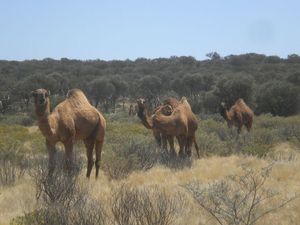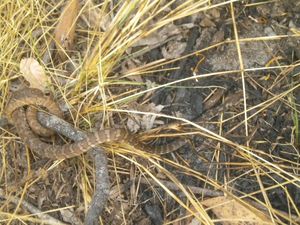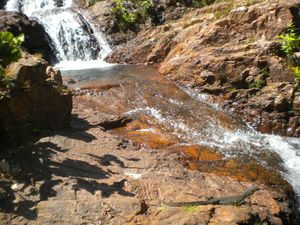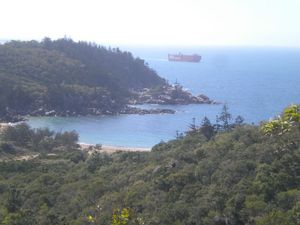Day 93 - Voyage on the Ghan and Stunning sunset !!
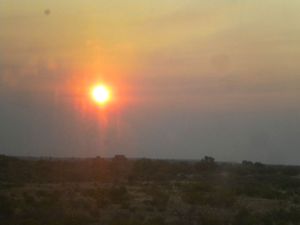 Travelling on the Ghan - the the famous australian train riding between Adelaide and Darwin - I got the chance to witness the most sensational sunset.
Travelling on the Ghan - the the famous australian train riding between Adelaide and Darwin - I got the chance to witness the most sensational sunset.
Australia is a country with generally awesome sunsets, and this one was particularly impressive.
Imagine a cloudless sky above flat lands with red sand nurrishing green bushtrees.
A perfectly round sun shinning as never before surrounded by a burning halo. It then turned to bright red, a hardly described color. then a soft purpleslowly fading away until it completely disappeared about 10cm above the horizon. It left a beautiful twilight sky going from clear blue to deep purple via soft nuances of yellow and red.
STUNNING !!
 Voyageant sur le Ghan - le train australien mythique qui relit Adelaide et Darwin - j'ai eu la chance d'observer le plus sensationnel coucher de soleil.
Voyageant sur le Ghan - le train australien mythique qui relit Adelaide et Darwin - j'ai eu la chance d'observer le plus sensationnel coucher de soleil.
L'Australie est un pays avec des couchers de soleil générallement impressionnants, comme dirait Louis José Houde "c'est pas l'même gars qui met les buches dans l'soleil", et celui-ci était particulièrement époustouflant.
Imaginez un ciel sans nuage au dessus d'un pays tout plat: sable rouge et arbustes verts.
Le soleil est ârfaitement rond, brillant comme jamais et entouré d'un halo brulant. Il passe ensuite à un rouge éclatan, puis un ton violet paste avant de se voiler lentement jusqu'à disparaitre complètement environ 10cm au dessus de la ligne d'horizon.
Il laisse un surperbe crepuscule: le ciel se colore, passant d'un bleu pur à un violet profond via des tons pastel de jaune et de rouge.
EPOUSTOUFFLANT !






